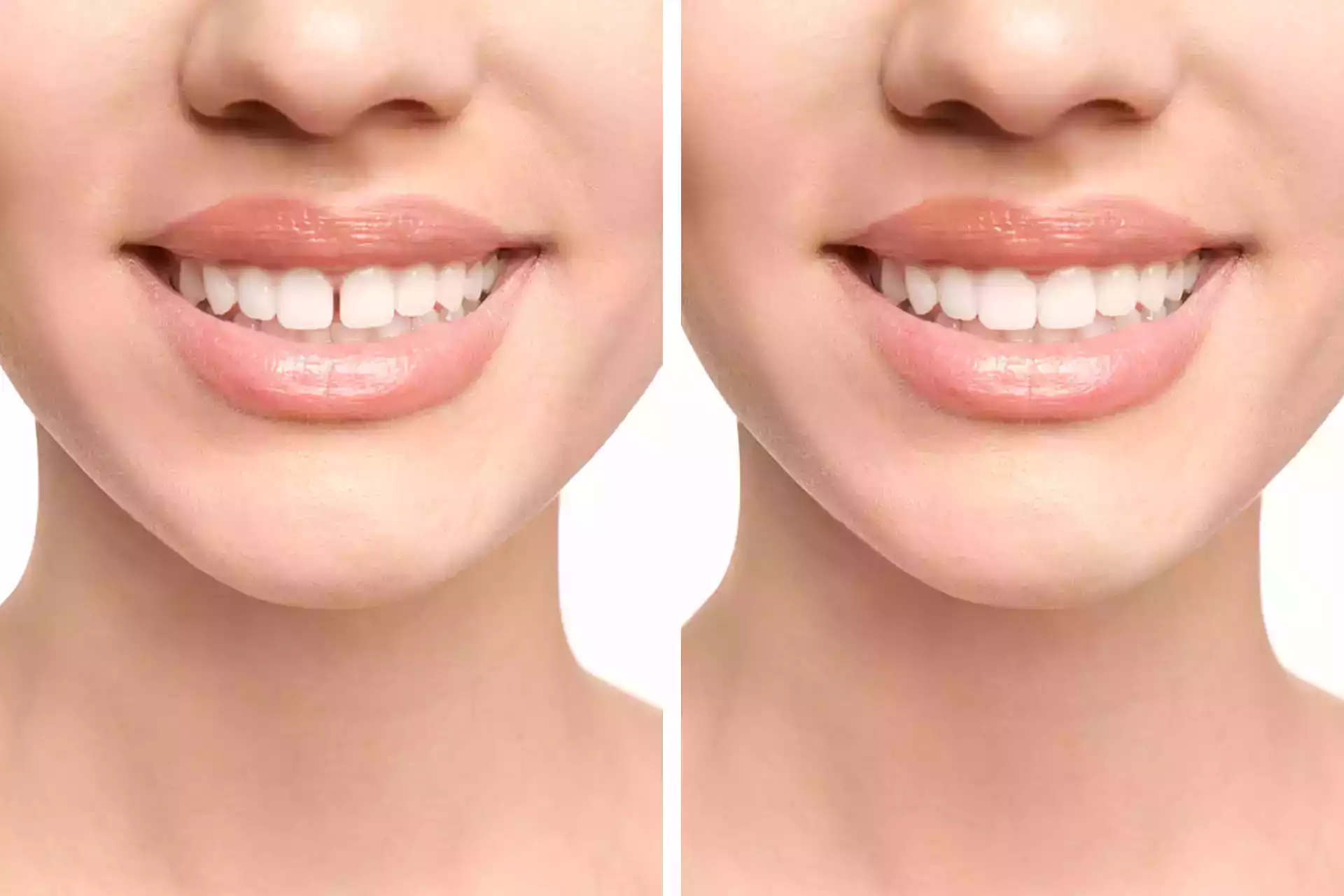Diastema, characterized by a visible space between two teeth, is a common dental anomaly observed across various populations. While often perceived as a cosmetic concern, its etiology is multifactorial, involving a complex interplay of genetic predispositions, oral habits, and anatomical variations. Clinical prevalence estimates suggest that diastema affects a significant percentage of the population, with reported rates varying based on age, ethnicity, and the specific teeth involved. For instance, studies indicate that spacing between the central incisors, known as a midline diastema, is particularly prevalent in childhood, often closing naturally as permanent dentition emerges. However, persistent cases necessitate a comprehensive understanding of their underlying causes. This requires a meticulous diagnostic approach to differentiate between benign and clinically significant presentations. Understanding the diverse manifestations and implications of diastema is crucial for effective patient management and appropriate intervention strategies.
Table of Contents
What Causes Gaps Between Teeth and Is It a Problem?
Diastema refers to a gap or space between two teeth, most commonly occurring between the upper front teeth. This dental condition affects individuals across all age groups and presents in various forms throughout the oral cavity.
Understanding Diastema: Definition and Presentations
The diastema dental definition encompasses several distinct presentations that dental professionals observe in clinical practice:
- Central diastema: Space between the upper central incisors, representing the most recognisable form
- Multiple diastemata: Gaps occurring between several teeth throughout the dental arch
- Lateral spacing: Spaces between adjacent teeth in posterior regions
- Generalised spacing: Overall increased spacing between most teeth in the mouth
- Localised gaps: Single spaces occurring between specific tooth pairs
Primary Causes of Diastema
Understanding what is diastema requires examining the underlying factors that create these spaces. Diastema causes stem from various developmental, genetic, and environmental influences that affect tooth positioning and jaw development.
Developmental factors constitute the most significant category of diastema causes:
- Tooth size discrepancy: When teeth are naturally smaller relative to jaw size, creating excess space
- Missing teeth: Congenitally absent lateral incisors or other teeth leave gaps that adjacent teeth cannot close
- Supernumerary teeth: Extra teeth that prevent normal tooth alignment and create spacing irregularities
- Jaw size variations: Larger jaw structures provide more space than teeth can naturally occupy
Genetic predisposition plays a substantial role in diastema development. Research indicates that 70% of spacing issueshave hereditary components, with parents frequently passing tooth size and jaw structure characteristics to their children.
Oral habits significantly contribute to space between two teeth formation:
- Thumb sucking: Prolonged sucking beyond age four creates forward tooth movement and spacing
- Tongue thrusting: Abnormal swallowing patterns push teeth outward, widening existing gaps
- Lip habits: Chronic lip biting or sucking affects tooth positioning over time
- Mouth breathing: Altered oral posture influences tooth alignment and spacing patterns
Periodontal considerations also influence diastema formation. Gum disease weakens tooth support structures, allowing teeth to shift and create new spaces. Additionally, oversized labial frenums—the tissue connecting lips to gums—can prevent front teeth from closing together naturally.
When Professional Attention Becomes Necessary
The question “is diastema bad” depends entirely on individual circumstances and associated complications. Many patients wonder whether their tooth gaps require professional intervention or represent purely cosmetic concerns.
Functional complications indicate when diastema requires professional evaluation:
- Speech difficulties: Gaps affecting pronunciation, particularly with ‘s’ and ‘z’ sounds
- Food impaction: Persistent food trapping between teeth leading to hygiene challenges
- Bite irregularities: Spacing affecting proper tooth contact during chewing
- Progressive widening: Gaps that continue expanding over time, indicating underlying issues
Oral health implications also determine treatment necessity. When spaces trap food debris consistently, patients face increased risks of tooth decay and gum inflammation. These complications often develop gradually, making regular professional monitoring essential for maintaining optimal oral health.
Age-related considerations influence treatment decisions significantly. In children under eight years, small central gaps often close naturally as permanent teeth erupt. However, spaces exceeding 2 millimetres or persisting beyond age ten typically require professional assessment.
Psychological impact represents another crucial factor in determining treatment needs. While some individuals embrace their diastema as a distinctive feature, others experience confidence issues that affect social interactions and professional opportunities.
Modern dental practices observe that approximately 25% of adults seek treatment for diastema concerns, with motivations ranging from functional improvements to aesthetic enhancement. The decision ultimately depends on individual priorities, oral health status, and the specific characteristics of each case.
Professional evaluation provides comprehensive assessment of diastema meaning for each patient’s unique situation, ensuring appropriate recommendations based on current oral health status and long-term stability considerations. In certain cases, Frenectomy Surgery Methods Treatment may be recommended to address diastema caused by an overly tight or large labial frenum. This procedure can help facilitate proper dental alignment and promote better oral hygiene.
Different Types of Diastema: Size and Location Explained
Diastema presents in various forms and locations throughout the mouth, each with distinct characteristics that influence both appearance and function.
Small, Mild, and Large Diastema
- Small diastema typically measures less than 2 millimetres between teeth and remains barely noticeable during normal conversation. These minimal gaps often develop naturally and rarely impact speech patterns or oral hygiene routines. Small gaps frequently occur between lateral incisors and canines, creating subtle spacing that many patients consider aesthetically acceptable.
- Mild diastema ranges from 2-4 millimetres and becomes more apparent when smiling or speaking. This moderate spacing can affect certain consonant sounds, particularly ‘s’ and ‘z’ pronunciation. Mild gaps commonly appear between central incisors, creating a noticeable but manageable aesthetic concern for most individuals.
- large diastema exceeds 4 millimetres and significantly impacts both appearance and function. These prominent gaps often create whistling sounds during speech and can trap food particles more readily. Large spacing typically requires professional intervention to address functional limitations and aesthetic concerns effectively.
Front, Middle, and Bottom Teeth Gaps
- Front diastema occurs between the upper central incisors and represents the most recognisable form of tooth spacing. This prominent gap affects smile aesthetics significantly and often influences first impressions during social interactions. Front gaps typically develop due to prominent frenum attachment or natural tooth size discrepancies.
- Middle diastema appears between premolars and canines, creating less noticeable but functionally significant spacing. These gaps often develop following tooth extractions or natural growth patterns during adolescence. Middle spacing can affect bite alignment and chewing efficiency over time.
- Diastema bottom teeth occurs less frequently than upper gaps but presents unique challenges for oral hygiene maintenance. Lower gaps typically appear between incisors or premolars, often developing after periodontal disease or natural tooth migration. Bottom teeth spacing requires careful monitoring to prevent food impaction and bacterial accumulation.
Aesthetic Considerations and the ‘Diastema Smile’
- The diastema smile has gained cultural recognition as an attractive and distinctive facial feature. Celebrity examples like Lauren Hutton and Madonna have popularised gap-toothed smiles, challenging traditional beauty standards. This aesthetic appreciation varies significantly across cultures, with some societies viewing gaps as symbols of beauty, fertility, or good fortune.
- Beautiful diastema occurs when gap proportions complement overall facial features harmoniously. Dental professionals recognise that certain gap sizes and positions can enhance rather than detract from smile attractiveness. The golden ratio principles often determine whether spacing appears balanced and aesthetically pleasing within individual facial structures.
- Contemporary cosmetic dentistry acknowledges that not all gaps require correction, particularly when they contribute positively to unique smile characteristics. Patient satisfaction surveys indicate that many individuals prefer maintaining their natural diastema rather than pursuing orthodontic closure.
Impact of Diastema on Speech and Oral Health
- Speech patterns can experience significant alterations with larger gaps, particularly affecting sibilant sounds and airflow control. Phonetic studies demonstrate that gaps exceeding 3 millimetres frequently produce audible air escape during consonant pronunciation. Professional speech therapy may complement dental interventions for comprehensive treatment outcomes.
- Oral health implications include increased plaque accumulation and food particle retention within gap spaces. Clinical research indicates that diastema patients require modified brushing techniques and specialised interdental cleaning tools. Regular professional cleanings become particularly important for maintaining gingival health around spaced teeth.
Temporary vs. Permanent Diastema
- Temporary diastema commonly appears during childhood development, particularly between ages 6-8 when permanent teeth erupt. These developmental gaps typically close naturally as lateral incisors and canines emerge fully. Paediatric dentists recommend monitoring rather than immediate intervention during normal development phases.
- Permanent diastema persists into adulthood and remains stable without professional intervention. These established gaps result from anatomical factors, including tooth size discrepancies or jaw structure variations. Permanent spacing requires comprehensive evaluation to determine appropriate management strategies based on functional and aesthetic priorities.
Treatment Options: From Braces to Surgery
Diastema treatment encompasses several established approaches, ranging from traditional orthodontic solutions to advanced surgical procedures. Our clinical experience demonstrates that treatment selection depends on gap size, patient age, and underlying dental structure. Each method addresses tooth spacing with distinct mechanisms and timeframes.
Orthodontic treatments remain the most commonly prescribed solutions for closing diastema with braces:
- Traditional metal braces provide consistent pressure to move teeth gradually into proper alignment
- Clear aligners offer a discrete alternative for mild to moderate spacing issues
- Ceramic brackets blend with natural tooth colour while maintaining treatment effectiveness
- Lingual braces attach to tooth backs, making them virtually invisible during treatment
The orthodontic process follows structured phases. Initial consultation includes comprehensive examination and treatment planning. Active treatment typically spans 12-24 months for standard cases, with regular adjustments every 4-6 weeks. Retention phase involves wearing retainers to prevent gap recurrence.
Cosmetic dental procedures address aesthetic concerns efficiently:
- Dental bonding applies tooth-coloured resin to close small gaps immediately
- Porcelain veneers provide permanent coverage for teeth with persistent spacing
- Composite restoration rebuilds tooth structure to eliminate unwanted spaces
- Crown placement offers comprehensive coverage for severely affected teeth
Surgical intervention addresses complex anatomical issues causing persistent gaps. Frenectomy removes excessive tissue between front teeth, particularly effective when thick labial frenum prevents natural closure. Gum grafting restores tissue lost to periodontal disease, supporting tooth movement. Bone grafting addresses underlying structural deficiencies affecting tooth positioning.
Fixing diastema through surgical means requires careful patient selection. Candidates typically present with anatomical abnormalities or failed previous treatments. Recovery involves 7-14 days of initial healing, with complete tissue maturation occurring over several months.
Diastema treatment at home involves limited options with variable success rates. Dental bands marketed for gap closure lack professional supervision and carry significant risks. Oil pulling and specialized toothpastes provide minimal spacing improvement. Professional consultation remains essential before attempting any self-treatment approach.
Post-treatment considerations significantly impact long-term success:
- Retainer compliance prevents diastema after braces treatment
- Regular dental maintenance preserves cosmetic improvements
- Habit modification addresses tongue thrusting or thumb sucking behaviours
- Professional monitoring detects early signs of gap recurrence
The following comparison illustrates treatment cost differences between Turkey and the UK:
| Treatment Type | Turkey (£) | UK (£) | Savings |
|---|---|---|---|
| Metal Braces | 800-1,200 | 2,500-4,000 | 65-70% |
| Clear Aligners | 1,000-1,800 | 3,000-5,500 | 67-70% |
| Dental Bonding | 80-150 | 200-400 | 60-65% |
| Porcelain Veneers | 180-300 | 500-1,000 | 64-70% |
| Frenectomy Surgery | 200-400 | 800-1,500 | 73-75% |
These figures reflect current market rates including consultation and basic aftercare services.
Braces diastema treatment shows excellent success rates when patients maintain proper oral hygiene and follow professional guidance. Clinical studies indicate 85-95% success in permanent gap closure with orthodontic intervention. Combined approaches, utilizing both orthodontic movement and cosmetic enhancement, provide optimal aesthetic outcomes for complex cases requiring comprehensive diastema cure strategies.



